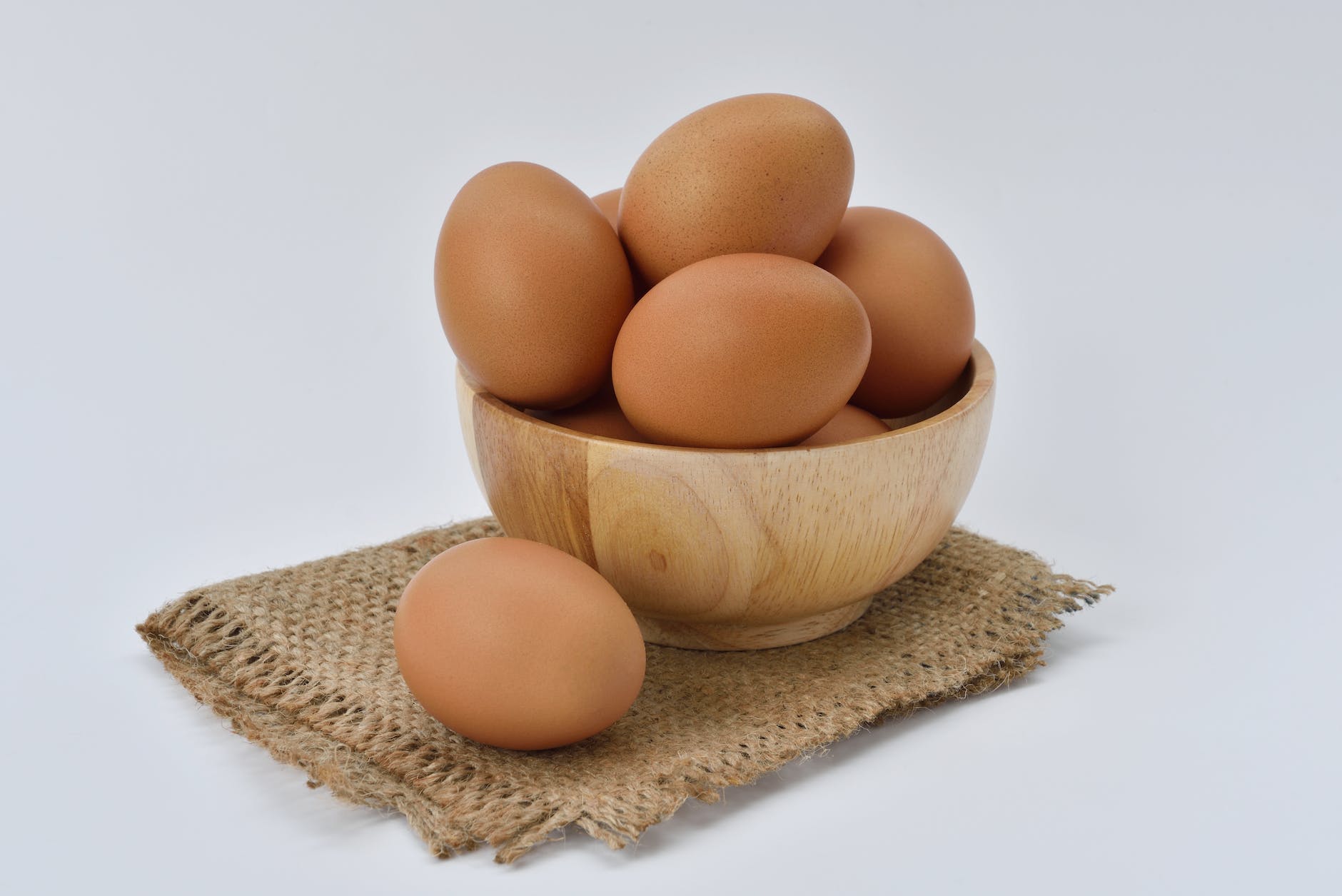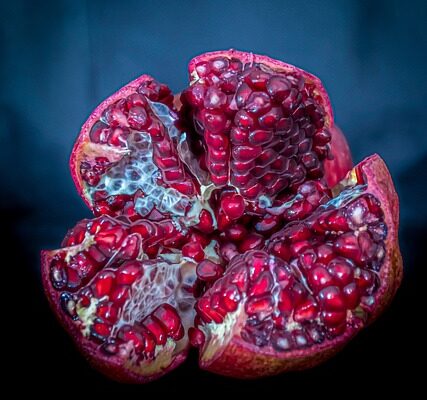The level of nutrition per specific volume of food is referred to as nutrient density. Nutrient-dense foods contain a high concentration of nutrients while containing fewer calories. All of the superfoods you’ve heard of are high in nutrients. Energy-dense foods include more calories per unit of food and fewer nutrients.
What Is Nutrient Density Food and How Does It Work?
You’re starving, yet it’s still a few hours before supper, so you settle on a snack. You can have an apple or a glazed donut. They are nearly the same size, and either item is suitable for a short snack before returning to work.
Which one do you prefer?
Hopefully, you choose the apple rather than the donut. The apple has approximately 80 calories as well as numerous vitamins, fiber, and phytochemicals. The apple’s fiber will fill you up and keep you satisfied till dinner.
The donut contains a lot of calories. In fact, the donut has more than 200 calories but few nutrients. There is only approximately one gram of fiber—it will not keep you full. Eating one sweet donut might easily lead to another and possibly a third. Yes, it tastes nice, but your body may pay a high price later for this instant enjoyment.
By calculating the number of calories in each food by weight, volume, or portion size, you may compare nutrient density to energy density.
Compare a cup of carrot slices to four saltine crackers, for example. Both snacks have roughly 50 calories. However, carrots contain far more nutrients for the same amount of calories. The carrots are high in nutrients, while the crackers are high in energy.
Understanding nutrient density food is critical for those on diets to lose weight. Low-calorie foods that are high in fiber and other vitamins can help you lose weight.

Superfoods High in Nutrients
As you can see from the samples, vividly colored fruits and vegetables are significant winners in terms of nutrient density. That is one of the reasons why so many fruits and vegetables are considered superfoods.
Superfoods include carrots, tomatoes, broccoli, kale, spinach, berries, apples, cherries, pomegranates, and oranges.
Salmon, tuna, trout, low-fat dairy products, oats, whole grains, soy, dry legumes, and even some fortified foods are among the other nutrient-dense superfoods. Pastries, processed lunch meats, processed cheeses, ice cream, sweets, soda, potato chips, and corn chips, on the other hand, are examples of energy-dense, nutrient-poor foods. To put it another way: junk food.
Identifying Nutrient-Dense Foods
Look for entire foods at the grocery store, such as produce, fresh lean meats, whole grains, nuts, seeds, and legumes. These meals are more expensive than energy-dense packaged foods, but they are nutrient density food which provide more nutrients for the same price.
Most customers select packaged items for their convenience, but you can still make wise decisions with them if you read the labels. Nutrition Facts labels can be seen on the backs or sides of products. Examine the serving sizes, the calories per serving, and the amounts of fiber, protein, vitamins, calcium, and iron.
The winner is the packaged product with the best mix of reduced calories, more nutrients, and less saturated fat, added sugar, and sodium.
You might broaden your food shopping to include farmers’ markets for fresh veggies and fruit. These will not have nutrition facts labels, but they are nutrient-dense by nature.
What are the top 20 most nutritious foods?
1. Avocado
Avocado is a nutrient-dense food that counts as one of your five-a-day servings with just half a fruit. It’s high in monounsaturated fat, vitamin E, and folate, all of which are beneficial to the heart. Avocado also includes more soluble fiber than most other fruits and a variety of beneficial minerals such as iron, copper, and potassium.
2. Blackcurrants
These tiny tart fruits are high in phytonutrients, which promote good health. They’re the unsung heroes of the fruit orchard, with 40% more beneficial polyphenols and 30 times more vitamin C than blueberries. Numerous studies indicate that they can help with high blood pressure and other cardiovascular diseases.
3. Brussels sprouts
In addition to providing more important nutrients per calorie than most other vegetables, Brussels sprouts are particularly high in the plant chemical kaempferol. This antioxidant has been explored for its several health benefits.
Rather than boiling sprouts, microwave or steam them to retain up to twice their nutritional value.
4. Buckwheat
Buckwheat has a higher antioxidant profile than many cereal grains, including oats and wheat. It’s one of the richest food sources of d-chiro inositol. This can help manage blood sugar levels. It also contains plant components, including rutin. Buckwheat is inherently gluten-free due to its status as a seed rather than a grain.
Buckwheat is used to produce buckwheat pancakes and mushroom buckwheat risotto.
5. The seeds of chia
These tiny black seeds are high in minerals. It has calcium, magnesium, and phosphorus, all of which are good for bone health. A 25g serving of chia seeds contains around 158 mg of calcium, which contributes significantly more than the equal quantity of milk.
6. Egg
Whole eggs are incredibly dense, containing nearly every vitamin you require. They are also good suppliers of several difficult-to-find minerals, including vitamin D and B12, as well as the mineral iodine. Eggs are a ‘complete’ protein, meaning they include all nine essential amino acids.
Because of the diet the hens are fed, choosing a brand enhanced with omega-3 fatty acids will provide you with a larger dose of these necessary fats as well as fat-soluble vitamins like vitamins A and E.
Enjoy avocado and black bean eggs, as well as Indian-style chickpeas with poached eggs.

7. Garlic
The majority of garlic’s health benefits are attributed to an active component known as allicin. This sulfur-containing molecule gives garlic its distinct smell and flavor. Fortunately for keen cooks, the act of chopping or crushing encourages the formation of allicin, but the application of heat inhibits it – to maximize results, add garlic late in the cooking process.
Several studies have focused on garlic’s potential for lowering the risk of heart disease and aiding with cholesterol management. Garlic may help reduce blood pressure by widening blood arteries and allowing blood to flow more freely.
8. Gouda
Gouda, as a semi-hard cheese, is high in calcium and an excellent source of vitamin K2. Vitamin K2 is essential for strong bones and teeth. It contains chemicals that inhibit the angiotensin-converting enzyme (ACE), potentially decreasing blood pressure.
Gouda also includes antioxidants that appear to protect the cardiovascular system from the effects of high salt levels; this is especially important for salt-sensitive people.
Roast Jerusalem artichokes with leeks, crème fraîche, walnuts, and shaved gouda is a fantastic meal.
9. Kefir
Kefir, which has a more diversified makeup of beneficial bacteria and yeast than yogurt, is definitely worth including in your diet.
These microorganisms are responsible for the production of bioactive chemicals, which have several health benefits ranging from improved digestion to cholesterol reduction.
10. Kiwi
When compared to other regularly consumed fruits, kiwi is unparalleled in terms of nutrient richness, health advantages, and ability to strengthen the heart.
Eating kiwi on a regular basis appears to boost high-density lipoprotein (HDL) – the so-called ‘good’ cholesterol that lowers other blood triglycerides (fats) and inhibits platelet aggregation, which may lead to atherosclerosis over time.
Kiwi also aids in blood pressure management due to its effects on the angiotensin-converting enzyme (ACE).
11. Lentils
According to research, eating lentils on a regular basis lowers the risk of chronic diseases such as diabetes, obesity, cancer, and heart disease.
This is due to protecting plant chemicals known as phenols; lentils are among the top legumes in terms of phenolic content. So it’s no surprise that lentils have antioxidant, antibacterial, antiviral, anti-inflammatory, and cardioprotective properties.
12. Liver
This is considered one of the most nutrient-density foods accessible, low in calories, high in protein, and high in important vitamins and minerals. It is even more of a superfood because the nutrients it contains are quickly absorbed by the body.
It’s an especially strong source of vitamin A in the form of retinol, which is considered the ‘active’ form of vitamin A. Liver also contains vitamin D, albeit in a more ‘active’ form – vitamin D3.
13. Olives and olive oil
Olives and their oil, which are high in polyphenols, may aid in lowering the risk of chronic diseases such as heart disease, atherosclerosis, and cancer. One such polyphenol is oleocanthal, which appears to have the same pharmacological activity as ibuprofen, operating as a powerful natural anti-inflammatory.
Olive oil is a monounsaturated fat (MUFA) derived from the juice of the olive fruit, which means it only contains one double bond, making it more resistant to alterations caused by cooking. If you choose virgin olive oil, you will also gain the antioxidant capabilities of various polyphenols and minerals, including vitamin E.
14. Onion
Onions are one of the largest sources of flavonoids in our diet, with over 25 distinct types. When ingested on a regular and sufficient basis, these chemicals may help protect against chronic diseases such as cancer and diabetes.
One of the flavonoids found in onions is quercetin, which has antiviral and anti-histamine qualities; however, don’t over-peel because the majority of the quercetin is contained in the onion’s outer layers.
15. Pistachio
Pistachios have the highest potassium level and the lowest fat and calorie content of any other nut. They are particularly high in phytosterols, which promote cardiovascular health. These nuts are the only nuts that contain adequate amounts of lutein and zeaxanthin, two carotenoids that play a significant role in eye protection.
16. Pomegranate
With research indicating that pomegranate juice contains 3 times the antioxidant activity of green tea and red wine, it’s reasonable to expect some rather amazing health advantages.
17. Salmon
Salmon, a popular oily fish, is high in the most beneficial omega-3 fatty acids. These fatty acids, known as ‘long chain’ fatty acids, are found naturally in oily fish as eicosapentaenoic acid (EPA) and docosahexaenoic acid (DHA).
These essential fats are known to promote heart health as well as skin, joint, and hormone balance. Salmon is also high in fat-soluble vitamin D.
Scientists are also looking into the impact fatty fish may have in preventing certain cancers and illnesses such as asthma, macular degeneration, and rheumatoid arthritis.

18. Tempeh
Tempeh is a classic soya food produced from cooked, fermented soya beans. It is a popular plant-based protein. It’s high in bone-building minerals like calcium, magnesium, and phosphorus.
Furthermore, the fermentation process degrades molecules known as anti-nutrients, which may limit our absorption of certain of these essential minerals. This makes fermented foods, such as tempeh, easier to digest and absorb the nutrients they contain.
19. Walnut
Walnuts, like all nuts, contain ‘good-for-you’ fats that are mostly polyunsaturated. In fact, walnuts have the highest content of the short-chain’ omega-3 essential fatty acid, alpha lipoic acid (ALA), of any edible plant. As a result, they are an extremely important addition for people following a plant-based diet.
Walnuts work well with our aubergine, lentil, and walnut ragu and our goat’s cheese, pear, and walnut tartines.
20. Watercress
Watercress is an aquatic leafy green from the cruciferous family that contains cancer-fighting chemicals known as isothiocyanates. These chemicals appear to be beneficial against colon, prostate, and skin cancer, and they may inhibit the growth of breast cancer.
Watercress is high in antioxidant polyphenol plant chemicals, which may help fight chronic diseases related to aging.
When Do You Need Energy-Dense Foods?
Underweight people require energy-dense foods to ensure they consume enough calories to build weight. Peanut butter, dried fruits, starchy vegetables, and cheese are examples of nutrient-dense and energy-dense foods.
To Conclude
Eating nutrient-dense foods will ensure you obtain what your body requires for excellent health and will not leave you hungry later. Making nutrient-dense meal choices can become a habit.
The rest is simple once you know which foods are higher in nutrient density. You’ll soon be eating lean protein and colorful fruits and veggies.
